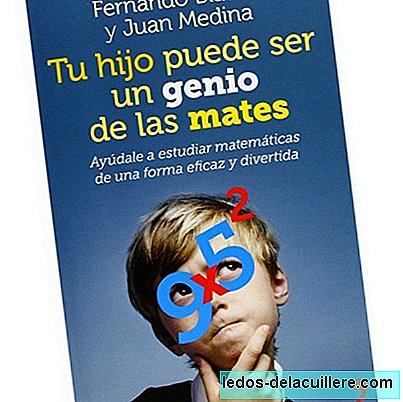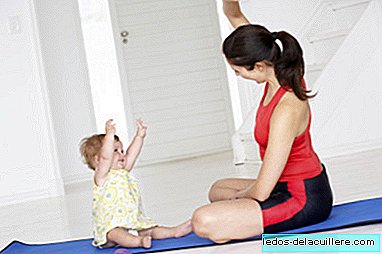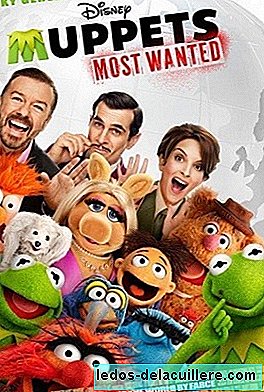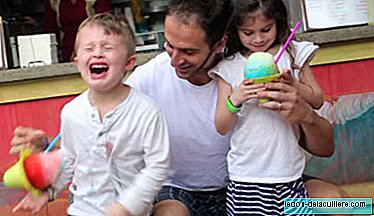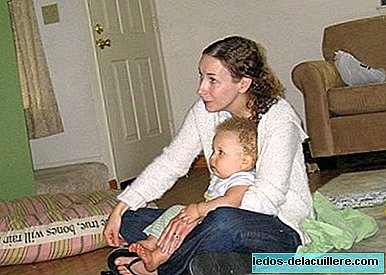
Yesterday we offered the conclusions of two new studies about “educational” DVDs that showed that not only did they not make children learn more, but that those children who saw them showed less communication skills than those who did not.
Many parents spent the money for their children to watch these DVDs, because they also seemed beautiful (they personally do not seem ugly to me and, in addition, the child listens to classical music) and many other parents have them at home as gifts from children. family or friends and now they ask:And now, what do I do with the "educational" DVDs?“
Reading the conclusions of the studies it may seem that these videos have the ability to erase children's minds or something similar. Nothing is further from reality. The problem that children spend part of their time in front of one of these videos is the same that originates when a child spends time in front of the television, watching anything else, that the time spent there in front of himself is time in the that the child is not relating to the environment or people.
In other words, the conclusions of these studies are that no DVD, whether educational or not, has been proven so far to make children learn faster than children who don't see them and that watching television makes children learn less than children who do not watch it and spend that time living with other people and discovering their immediate surroundings.
Ok, but then what do I do with the "educational" DVDs?
Well there are several options, namely:
- Throw them away or resell them: what has been said, they really do not contribute anything to the children.
- Use them as a means of entertainment: if you get your children not to watch TV all day long, great. If you do not get it and there are times when you need to be entertained with something, they can be a good resource compared to other cartoons that are broadcast on television.
- Take advantage of it and make it really educational: the failure of these DVDs, which means that they cannot be considered educational, is that they do not produce interaction. They are simply a succession of images that never vary. The video does not care if the child looks or does not look, is happy or crying, has fallen asleep or looks carefully. It begins and ends unless someone removes it, whatever happens around it. But nevertheless, we parents can make them interactive and useful with them.
Taking advantage of the "educational" DVDs
As we have already said, the contents of the “educational” DVDs are not harmful in themselves, but are not equivalent in terms of learning to life itself. If parents are present while our children watch the videos, we can make them much more useful, since we can help reinforce the concepts shown in the videos.
The first thing to assess on these DVDs is that have a slow, slow pace, with a succession of images at low speed. In this way children learn better than when scenes are presented quickly.
Once we put the video on our son we must stay with him to give him life. Everything that the video does not say (which is a lot, because the phrases are limited to single words), we must say: "look, a sun that rises on the horizon and illuminates the meadow ...", "this is a puppy that we look, now look what he does !, paint a picture, like this, with his arm, up and down, ... ”,“ now take a cutlery and start eating, look, like the cutlery you have, let's take them and play what we eat like them! ”
In this way we add interaction with the environment that surrounds the child, taking the same objects that he is watching on television and giving it a practical use at that moment, so that the child can internalize what he sees in the video with real life. Let's say that this way the DVD becomes a tool, a vehicle to offer the child stimuli, play and contact (This sounds like a toy, right?)
When the video ends it may be a good idea to turn off the television and continue working on what we have seen, doing related activities: “we are going to put food on the birds on the terrace, so that they eat like the birds that were in the video”, “we will take some socks and make some puppets to make us the dog and the duck that came out in the video ”, etc.
In this way, as I say, the child internalizes the seen with the lived and in this way he does learn concepts and in this way the DVD does become an educational medium.
So you know, if you have “educational” DVDs, give them life. If you don't have them, yourselves. They are not necessary, but if we are present they can be a good resource to provide learning, play and fun to our children.


